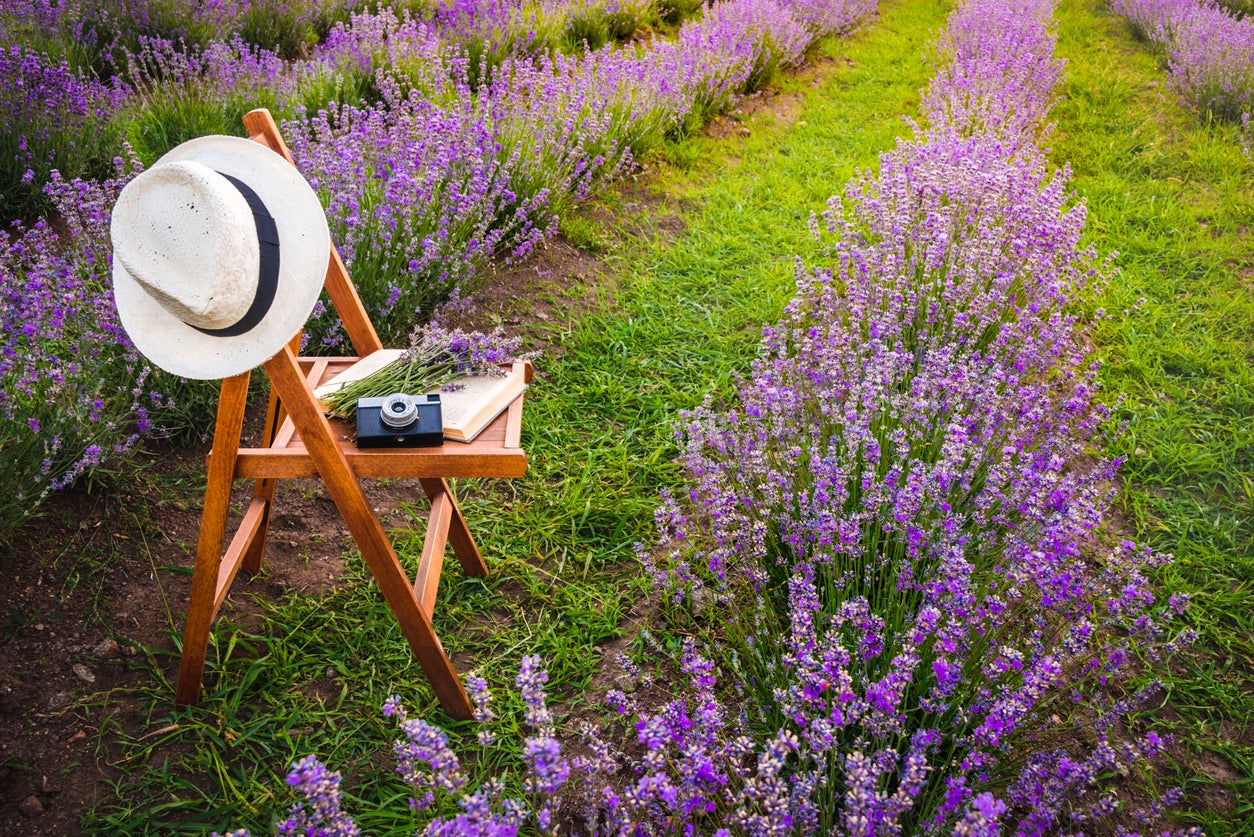Planting An All Lavender Garden – Lavender Garden Design Ideas


Whether you're looking to produce homemade lavender products or you just enjoy the sweet smell of lavender flowers blooming in the summer, planting an all-lavender garden can help you achieve your goal.
How to Create a Lavender Garden
Lavender is a low maintenance perennial herb originating in the Mediterranean. Grown for its fragrant flowers, lavender blooms can be used in soap making, potpourri, aromatherapy, and much more. Lavender is often planted along walkways and patios, added to herb gardens, or used in formal knot gardens. With a few simple steps, you can create your own garden of lavender.
Begin by choosing a good location for your lavender garden. Plants from the various lavender species require a sunny location with good drainage. Lavender prefers a neutral pH of 7 and does well in sandy or gritty soil. In humid or rainy environments, lavender may thrive better when grown in raised beds.
Once you've chosen a location for your new garden of lavender, consider which varieties you wish to grow. With over 200 types of lavender available, gardeners can choose between various sizes, bloom times, hardiness, and flower color. With these choices in mind, the next step is planning a lavender garden design.
Elements of color, composition, and balance can be combined when creating a unique lavender garden design. For mixed flower beds, try contrasting lavender's spiky, purple blooms with bright orange California poppies or yellow black-eyed Susan. Create a subtle color palette by growing lavender in front of a light-colored wall or white fence overgrown with pastel pink climbing roses. Add a bench, rock features, or bird bath for eye appeal.
For centuries, lavender has also been used as a natural insect repellent. Planting rows of lavender near outdoor living spaces combines beauty with practicality. Lining walkways with lavender softens their edges and creates a more inviting atmosphere. Or try your hand at an all-lavender garden planted in an intriguing geometric pattern.
Growing Healthy Lavender Garden Plants
When plotting an all-lavender garden, consider the mature size of each variety. Leaving adequate space between plants not only makes it easier to weed and harvest lavender, but also creates a healthier environment for the herb.
Gardening tips, videos, info and more delivered right to your inbox!
Sign up for the Gardening Know How newsletter today and receive a free copy of our e-book "How to Grow Delicious Tomatoes".
Fungus and root rot are common problems when growing a lavender garden. Plants that are affected are best removed, but prevention is the key. These issues are often caused by overwatering, poor drainage, excessive humidity, and inadequate air circulation around the base of the plant. In lieu of moisture-retaining mulch, opt for sand or pea gravel as a groundcover. These will not only deter weed growth, but also improve surface drainage and decrease ground-level humidity.
Once an all-lavender garden is established, it requires minimal care. Annual pruning and regular weeding will keep the garden growing and producing beautiful and fragrant lavender blossoms for years to come.

Laura Miller has been gardening all her life. Holding a degree in Biology, Nutrition, and Agriculture, Laura's area of expertise is vegetables, herbs, and all things edible. She lives in Ohio.
-
 Try The Trend – Turn Any Bed Into A Keyhole Garden With This Clever In-Ground Composter
Try The Trend – Turn Any Bed Into A Keyhole Garden With This Clever In-Ground ComposterKeyhole gardening is an efficient and sustainable practice that saves space. Get started on this DIY project quickly and easily with an in-ground composter.
By Bonnie L. Grant
-
 4 Superfast Composting Methods: Turn Waste Into Garden Gold In 30 Days Or Less
4 Superfast Composting Methods: Turn Waste Into Garden Gold In 30 Days Or LessTry the fastest composting methods to turbocharge your pile and transform kitchen scraps and garden waste into finished compost in just a few weeks.
By Mary Ellen Ellis